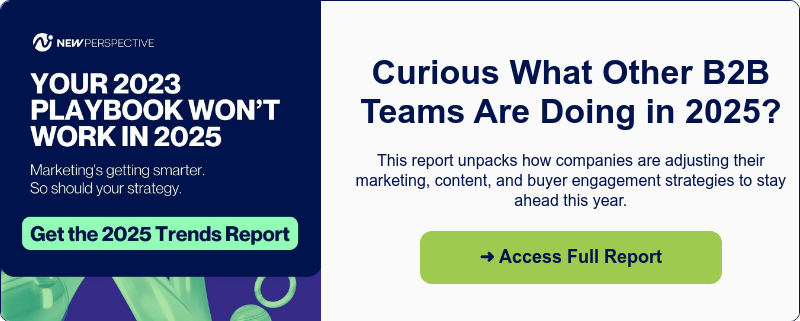Carbon Tunnel Vision: Looking Beyond Emissions to Reach Sustainability

Reducing carbon emissions is undeniably important. But becoming overly fixated on this one metric can lead to carbon tunnel vision — in which organizations become overly fixated on one goal.
While reducing carbon emissions is crucial, it is just one aspect of sustainable development. It’s important not to exclude other critical sustainability factors. Having that kind of blind spot can limit progress when it comes to achieving true sustainability — environmental, economic, and social.
It prevents us from exploring other opportunities for sustainability and may result in an organization just doing the bare minimum to meet its carbon reduction goals.
Better to broaden your sustainability strategy — and have a real impact by also focusing on other factors, such as water usage and waste generation.
How carbon tunnel vision took hold
Given the growing concern over climate change, there’s no question that organizations need to commit to more sustainable practices. It’s good for the planet and it’s undoubtedly good for business.
But too many companies may be taking a narrow view based on the widely held belief that carbon emissions in and of themselves are the prime drivers of global warming.
Increased regulations, laws, and policies are typically directed toward the effects of carbon, mandating that organizations disclose their carbon footprint and undertake measures to diminish it. Consequently, carbon emissions become the primary focal point in our approach toward sustainability.
Further, it may be a matter of simplicity. Carbon reduction initiatives are often more straightforward to implement than other sustainability approaches — and there’s a sense that since the results are tangible, they must be the most effective. It’s an understandable assumption.
.jpg?width=1000&height=563&name=carbon%20tunnel%20vision%20(2).jpg)
Beyond carbon emissions: 3 questions to ask
A commitment to sustainability has to look beyond carbon emissions to other impacts. Assessing your organization’s water consumption, waste generated, resources used, and other factors can further your sustainability efforts and help achieve meaningful progress. These kinds of efforts can greatly boost brand reputation as well. Here are three questions to ask:
- Are we overlooking key metrics? Metrics such as carbon footprint and energy consumption are certainly important. But they won’t fully capture an organization's sustainability performance.
- Are we missing opportunities? Companies may overlook opportunities to increase renewable energy use or reduce waste if you’re just looking at your carbon footprint. These missed opportunities can limit your ability to build and achieve a truly comprehensive, effective sustainability strategy that extends into the long term.
- Are we just focusing on compliance? Merely concentrating on meeting regulatory obligations can result in overlooking the chances to attain more significant sustainability outcomes, and diminish substantial progress for companies striving to decrease their climate impact.
Incorporating broader sustainability objectives can genuinely make a difference. Also, considering the highly competitive nature of the market and the rapid rise of sustainability as a critical concern, failing to do so may impede a company's position in the market.
What matters to stakeholders
Companies can figure out what sustainability issues matter most to them and their stakeholders through a range of practical exercises, from assessments to getting aligned with various KPIs and regulations.
While these can head into the technical territory, the clarity they produce in terms of goals and effective management is vital to a successful sustainability journey. These tools will help focus on more than GHG emissions.
Materiality assessments
Many organizations will conduct a materiality assessment to identify the environmental and governance issues that matter most to both internal and external stakeholders.
But one common mistake is conducting only single-focus time analyses as part of the exercise, which only looks at one impact — usually, carbon emissions. These won’t provide a full picture of what sustainability can look like.
Instead, consider a double materiality assessment. This data strategy can track multiple impacts and help craft a multidimensional sustainability strategy. It helps organizations prioritize and track issues beyond CO2 emissions, looking at various sustainability KPIs such as total energy consumption, generated waste, water used, supplier policies, and employee training hours.
Global Standards and Frameworks
Here’s a short list of some of the many standards and frameworks companies can align with to craft a broader sustainability strategy:
Doughnut economics is a visual way of depicting the elements needed for a sustainable and prosperous economy. It provides a useful framework for designing KPIs and sustainable strategies.
A life cycle assessment (LCA) helps organizations understand the total environmental impacts across the life cycle of a product, process, or service, “cradle” to “grave” and focus on both the energy and materials used. Similarly, a social life cycle assessment (S-LCA) looks at the social and socio-economic impacts.
Sustainability standards such as the GRI Standards (Global Reporting Initiative) and SDGs (Sustainable Development Goals) give companies an easy-to-use set of guidelines that help identify environmental, economic, and social impacts, track progress, establish workable goals and achieve them.
If you or an affiliate are located in the EU, pay attention to the European Sustainability Reporting Standards (ESRS) currently being developed — they should be finalized around June of this year and will be implemented in 2024.
Leveling up data practices
No surprise that the role of data is central to recognizing the need to move beyond looking at GHG emissions and building an effective sustainability program — no matter the initial ideals or objectives, it’s the data that will anchor the effort.
Among basic best practices:
- Ensure your company has a well-developed point of view on what data you’re going to need and how you’re going to use it as you develop the right data architecture.
- Data collection efforts and tools should be easy to use and integrated into the day-to-day workflows of those working with them.
- For those who contribute the data, make sure it’s clear why they’re doing it, and establish an ethical strategy based on transparency, fair practices, and compliance.
- Look for and lean on the growing array of tools that make it easy and cost-effective to collect, track, manage, and deploy sustainability data, from satellite imaging and Cloud-based data storage and powerful software.
- As a company, ensure that your data management reflects a clear commitment to track progress and take action beyond carbon emissions.
Holistic solutions
Finally, it’s a best practice to invite and involve the efforts of numerous departments in your company to move beyond the GHG emissions focus. Expanding our view of what sustainability means will take a shared, collaborative shift to a far more holistic approach.
The more organizations do it, the more we can leave tunnel vision behind.
If you want to explore this topic further, consider listening to episode No.6 of our podcast featuring Simon JD Schillebeeckx cofounder of Handprint, who provides a broader perspective on the issue of carbon tunnel vision.
We work closely with clients on building meaningful, effective marketing strategies that celebrate our shared commitment to sustainability. Reach out to learn more about how we can help.




